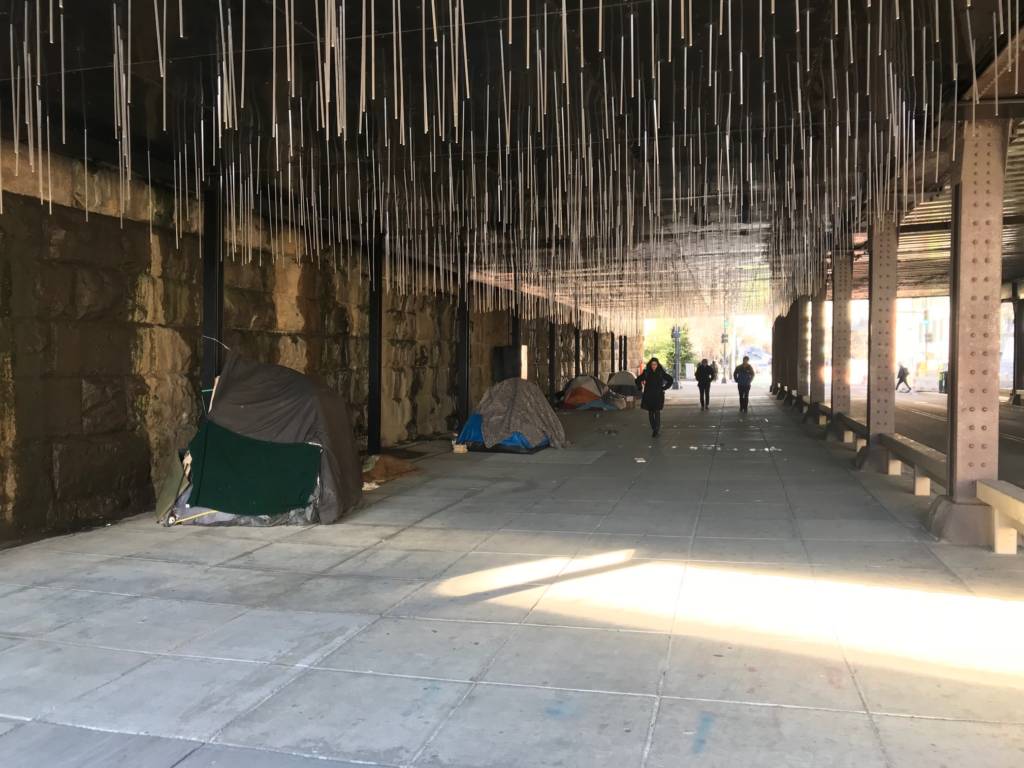Homeless encampments have been a contentious issue in D.C. ever since Mayor Muriel Bowser’s administration began aggressively carrying out encampment “cleanups.” But these cleanups have done little to address the root causes of homelessness. Despite the city repeatedly forcing people experiencing homeless to vacate the temporary homes and communities they had created, encampments continue to pop up in the city, often in or near the same places they were before the cleanups.
People choose to encamp mainly because of their reluctance to use the city’s emergency shelter system. Ask any homeless individual in D.C. why they avoid the shelters, and the answers will be the same: theft, unsanitary conditions, a lack of privacy and dehumanizing rules that limit their personal freedom.
The Foggy Bottom and NoMa neighborhoods in particular have been home to more or less permanent encampments since 2014. These neighborhoods offer several strategic advantages for the homeless populations that choose to live there: proximity to important services and public bathrooms; natural shelter provided by bridges and trees; and high levels of pedestrians, who provide donations to campers.
Both areas give D.C.’s homeless population their best chance at survival. There, on city land, encampment cleanups are carried out by the Office of the Deputy Mayor for Health and Human Services and are subject to the District’s Protocol for the Disposition of Property Found on Public Space and Outreach to Displaced Persons.

The protocol is certainly not perfect, and neither is the city’s compliance with it. Indeed, there is currently a class-action lawsuit against the District which alleges that encampment clearings have violated the Fourth Amendment and that the city has improperly destroyed essential personal belongings, including tents, identification documents, and medications during cleanups.
But it’s clear D.C.’s homeless would rather deal with the city than with the federal government.
The National Park Service, not the city, polices some of the city’s most centrally located, naturally sheltered, and bathroom-accessible locations — i.e. prime encampment locations — like the National Mall. Park Service regulations state that camping is only permitted in designated areas, none of which are present on the Mall or in the myriad of other small National Park units scattered throughout the city, such as Farragut and McPherson Squares.
Park Police are not subject to the same protocol as the city; they can act quickly and without warning or oversight. Street Sense has documented examples of campers who’ve lost their property or had it discarded by Park Police.
The National Mall, then, despite being a symbol of freedom and democracy, cannot be used by people experiencing homelessness in an attempt to meet their basic survival needs.
Forcibly clearing encampments is counterproductive, costs the city thousands of dollars every year and is tantamount to the criminalization of homelessness. The National Law Center on Homelessness and Poverty has identified more constructive ways of dealing with homeless encampments in reports like “Housing not Handcuffs: Ending the Criminalization of Homelessness in U.S. Cities” and “Tent City, USA.”
At minimum, the city should develop policies that allow for the cleaning of public spaces without displacing the homeless population that lives there. One potential solution? The city could designate areas for lawful encampments and ensure those areas are serviced with appropriate toilets, trash removal and protection from harassment. U.S. cities like Oakland, Seattle and Tacoma, Washington have already put in place sanctioned encampments.
Permanent housing, of course, is the ultimate goal. One study in central Florida found that providing chronically homeless people with permanent housing cost less than half of what the area spent on law enforcement and health care for its homeless population. Instead of playing a costly cat-and-mouse game with encampment residents, let’s find a solution—one that could save the city money, too.




